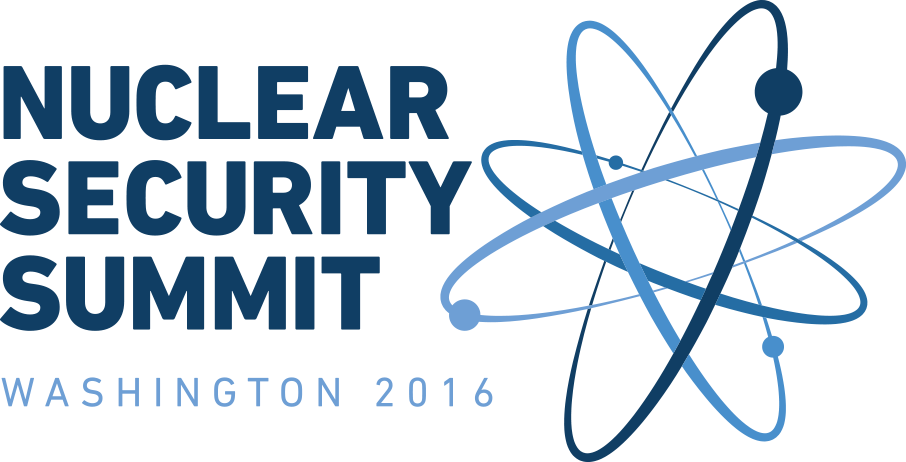National Statement: Australia
/The 2016 Washington Nuclear Security Summit
Australian National Statement
The Nuclear Security Summits have served well to strengthen the global nuclear security architecture and address the threat of nuclear terrorism. In spite of this, terrorists will seek to exploit the weakest link, misuse technology and take advantage of any lack of international cooperation in their quest to cause catastrophic damage and loss of life. This is why Australia fully supports high standards of nuclear security to prevent the theft of nuclear materials or sabotage of nuclear facilities.
Australia’s commitment to nuclear security, safeguards and non-proliferation is longstanding. Even prior to the first nuclear security summit in 2010, Australia had ratified the 2005 Amendment of the Convention on the Physical Protection of Nuclear Material, was already using low enriched uranium technology to fuel its research reactor and produce medical isotopes, was engaging strongly with the IAEA and regionally on promoting high standards of nuclear security, and was a regular contributor to the IAEA’s nuclear security fund since its inception in 2002.
Since the first Washington summit, Australia has ratified the International Convention on the Suppression of Acts of Nuclear Terrorism, hosted an IAEA Physical Protection Advisory Service (IPPAS) peer-review mission and has invited the IAEA to conduct a follow-up mission in 2017. Australia also has repatriated highly-enriched uranium (HEU) to the United States and supported many of the gift baskets and joint statements of supplementary initiatives that are associated with the summits.
Australia has provided over AU$2.4 million to the IAEA’s Nuclear Security Fund since its inception. Australia calls on all states to ensure that the IAEA has sufficient and sustainable resources to fulfil its central role in nuclear security.
Australia has confirmed its commitment to implement the IAEA’s Nuclear Security Series of guidance documents through its association with the joint statement on Strengthening Nuclear Security Implementation. Australia is proud to have been ranked top of the Nuclear Threat Initiative’s global review of nuclear security for three times in succession. Australia is also a leader in the safety and security of radioactive sources, having committed to the IAEA Code of Conduct on the Safety and Security of Radioactive Sources and to the Guidance on the Import and Export of Radioactive Sources, and having conducted a comprehensive outreach program on radioactive source security in South-East Asia and the Pacific.
Australia is further supporting global HEU minimisation efforts by significantly expanding its production of medical radioisotopes for the global market, made exclusively from low enriched uranium (LEU) targets using its LEU-fuelled reactor.
Australia continues to support the IAEA’s central role in nuclear security and also supports and participates in the leadership of the Global Initiative to Combat Nuclear Terrorism (GICNT) including by chairing the Nuclear Forensics Working Group.
Australia actively supports the Nuclear Industry Summit on nuclear security. More needs to be done to integrate the nuclear security goals and activities of industry and governments. Australia welcomes the significant contributions that non-government organisations have made to nuclear security conceptual development and the summit agenda, and welcomes the convening of the NGO Summit “Solutions for a Secure Nuclear Future” held earlier this week. Arrangements beyond the summits must involve the bringing together of government, industry and non-government participants to focus on continued improvement of the global nuclear security architecture and on effective implementation. In this regard, Australia welcomes the IAEA’s convening of a second Ministerial meeting and international conference on nuclear security in December this year.
The imminent entry-into-force of the 2005 Amendment to the Convention on the Physical Protection of Nuclear Material is a welcome outcome of the high-level attention to nuclear security gained through the summits. Importantly, this must be followed up with robust implementation of its provisions and a commitment to further improvement at its mandated review conference.
To be comprehensive, nuclear security architecture requires more than ratification of treaties, repatriation of nuclear material, and setting standards and guidelines. It also requires international cooperation and other voluntary measures where states can assure each other that their respective national nuclear security regimes are robust, implemented to a high standard and applied to all nuclear material under its control.
Australia will faithfully pursue the commitments set out in all the summit communiqués and the five action plans delivered at this final nuclear security summit. This includes support for the institutions and initiatives that will maintain the momentum produced through the summits.
In this regard, Australia will focus on four areas of activity for the sustainment of the nuclear security summit’s objectives and goals, namely through:
· supporting the existing nuclear security treaties, organisations and initiatives, consistent with and beyond the commitments made in the action plans delivered at this summit;
· being active in a post-summit contact group to promote the implementation of nuclear security commitments and identify emerging trends that may require more focused attention;
· involvement in track 1.5 dialogues and programs of government, industry and non-government experts for the enhancement of global nuclear security; and
· participating in regional initiatives for capacity building in nuclear security.
With this nuclear security summit being the last planned at present, Australia calls on all summit participants to stand by their commitments, maintain vigilance and sustain efforts for the continuous enhancement of the global nuclear security architecture to ensure the security of all nuclear material and facilities.

